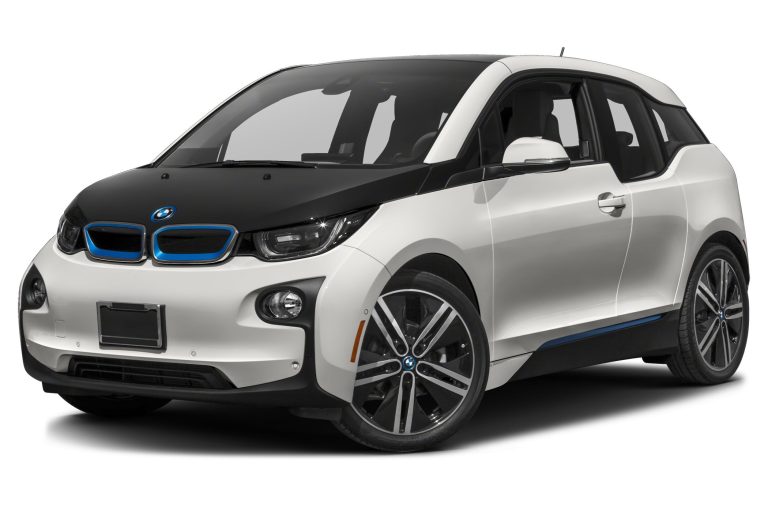The BMW i3
In the realm of electric vehicles, the BMW i3 stands as an innovative and trailblazing model. As one of the first fully electric cars produced by the renowned German automaker, the i3 has captured the attention of eco-conscious drivers worldwide. This article explores the key features and advancements that make the BMW i3 a standout choice in the electric vehicle market
Table of Contents

Electric Powertrain and Performance
At the heart of the BMW i3 lies its advanced electric powertrain, delivering an impressive driving experience. The car is available in two versions: an all-electric model and a range-extender variant equipped with a small gasoline engine that acts as a generator to charge the battery. The all-electric version offers a pure electric range of approximately 153 miles (246 km), while the range-extender model extends the range to around 200 miles (322 km).
The i3 accelerates quickly, thanks to its electric motor that generates instant torque, propelling the car from 0 to 60 mph in just over 7 seconds. The electric powertrain’s silent operation adds to the serene driving experience, and the car’s compact dimensions make it agile and easy to maneuver through urban environments
Interior and Technology
Step inside the BMW i3, and you’ll find a thoughtfully designed cabin that combines sustainability with luxury. The interior features natural materials like eucalyptus wood and leather tanned using olive leaf extract, further exemplifying the vehicle’s commitment to eco-friendliness.
The i3 incorporates a range of cutting-edge technologies, including a comprehensive infotainment system and a customizable digital instrument cluster. The infotainment system supports navigation, smartphone integration, and various connected services, allowing drivers to stay informed and entertained while on the go. Additionally, the i3 offers advanced safety features, including collision warning, automatic emergency braking, and parking assistance, ensuring a secure driving experience
Charging Infrastructure and Sustainability
BMW understands the importance of a reliable charging infrastructure for electric vehicle owners. With a range of charging options available, including standard wall outlets, public charging stations, and fast-charging capabilities, the BMW i3 offers convenient and flexible charging solutions. The car also supports DC fast charging, enabling a quick charge to 80% capacity in approximately 40 minutes.
Moreover, BMW’s commitment to sustainability extends beyond the vehicle itself. The company is actively engaged in developing renewable energy solutions and promoting the use of solar panels to power home charging stations. This holistic approach helps reduce the overall carbon footprint associated with owning an electric vehicle
BMW i3 Common Issues
While the BMW i3 is a remarkable electric vehicle, it is not without its share of common issues that some owners have reported. It’s important to note that not all i3 owners will experience these problems, and BMW has made efforts to address them through recalls and improvements. Here are some of the common issues associated with the BMW i3:
Range Anxiety: One of the most significant concerns for electric vehicle owners is range anxiety, the fear of running out of battery power before reaching a charging station. While the BMW i3 has a decent range for urban commuting, some owners have reported that the real-world range falls short of the advertised figures. Factors such as driving style, weather conditions, and use of climate control can impact the range.
Battery Degradation: Over time, electric vehicle batteries can experience degradation, resulting in reduced range and performance. Some i3 owners have reported a decline in battery capacity, especially in early production models. BMW has addressed this issue by improving battery technology and offering warranty coverage for battery-related concerns.
Software and Connectivity Issues: Like many modern vehicles, the BMW i3 relies on complex software systems to control various functions. Some owners have reported occasional glitches with the infotainment system, connectivity issues with smartphones, and software updates that may not always go smoothly. These issues can usually be resolved through software updates provided by BMW.
Charging Malfunctions: While the i3 supports various charging options, some owners have encountered issues with the charging process. Problems can range from difficulty in connecting to charging stations to errors in the charging system. These issues may be due to faulty charging equipment or software glitches. Ensuring compatibility with charging infrastructure and keeping software up to date can help mitigate such problems.
Brake System Noise: Some owners have reported unusual noises coming from the brake system, such as grinding or squealing sounds. This can be attributed to the regenerative braking system that uses the electric motor to slow down the vehicle and recharge the battery. While the noise may be disconcerting, it does not necessarily indicate a safety concern. However, if the noise persists or worsens, it’s advisable to have it inspected by a qualified technician.
Door Handle Mechanism: A few owners have reported issues with the exterior door handles failing to extend or retract properly. This can make it challenging to enter or exit the vehicle. In such cases, the door handle mechanism may require adjustment or replacement by a BMW service center.